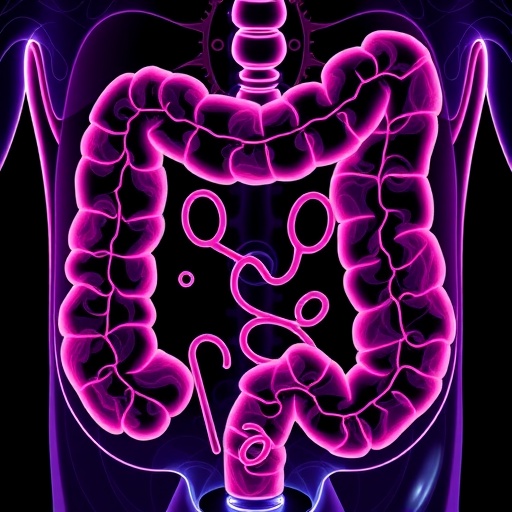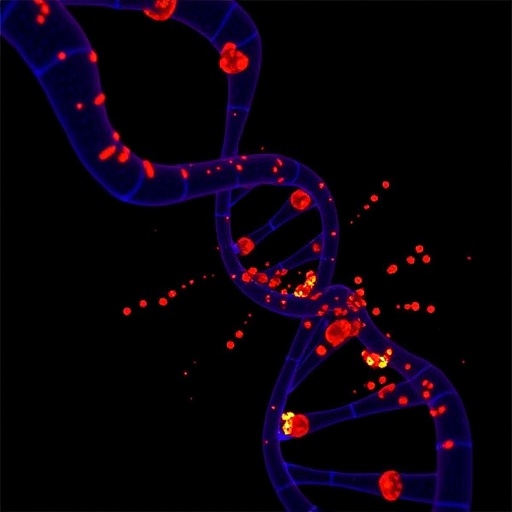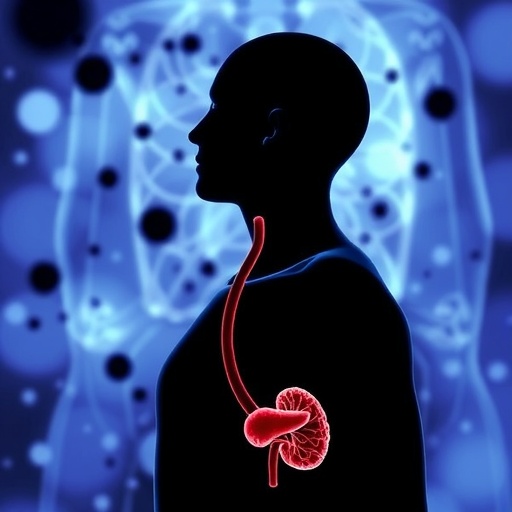In an era where artificial intelligence and deep learning are transforming healthcare, a groundbreaking study has emerged in the fight against colon cancer. The paper titled “ColoViT” showcases a remarkable integration of two powerful AI methodologies: EfficientNet and vision transformers. This synergistic approach aims to enhance the early detection and diagnosis of colon cancer—a leading cause of cancer-related morbidity and mortality worldwide. The collective efforts of Sathyanarayana, Alampally, Akella, and their team have set a new benchmark in the field of medical imaging and cancer detection.
The traditional methods of diagnosing colon cancer often rely heavily on invasive procedures, such as colonoscopies, which can be uncomfortable and carry risks. With the advent of machine learning techniques, researchers are beginning to pave the way for non-invasive, AI-driven alternatives. By harnessing the power of EfficientNet and vision transformers, the researchers have achieved promising results that could revolutionize the early detection landscape in oncology. This dual approach not only enhances the accuracy of cancer diagnostics but also minimizes the need for invasive testing, leading to more comfortable patient experiences.
EfficientNet is a family of convolutional neural networks that optimize performance while reducing computational costs. This makes it an ideal candidate for medical imaging applications, where the ability to process large datasets efficiently is paramount. The model’s strength lies in its scalability; it can adapt to different resource constraints while maintaining a high level of accuracy. In the context of colon cancer detection, EfficientNet’s ability to discern subtle patterns in imaging data is crucial, given that early signs of cancer can often be invisible to the human eye.
.adsslot_hb6sE7RoOJ{ width:728px !important; height:90px !important; }
@media (max-width:1199px) { .adsslot_hb6sE7RoOJ{ width:468px !important; height:60px !important; } }
@media (max-width:767px) { .adsslot_hb6sE7RoOJ{ width:320px !important; height:50px !important; } }
ADVERTISEMENT
On the other hand, vision transformers represent a paradigm shift in image recognition technology. Unlike traditional convolutional networks, which process images in a localized manner, vision transformers analyze an entire image as a sequence of smaller patches. This attention-based mechanism allows the model to grasp complex relationships and features within the data, leading to enhanced diagnostic accuracy. In combination with EfficientNet, the vision transformers work synergistically to improve the model’s robustness against false positives and negatives, further solidifying their importance in cancer detection efforts.
The researchers employed a comprehensive dataset comprising thousands of colonoscopic images, meticulously labeled for training and evaluation purposes. By exposing the dual model to a rich array of imaging data, the researchers enabled it to learn from a diverse set of examples. This process is critical, as machine learning models are only as effective as the data they are trained on. By infusing the training process with diverse examples of both healthy and cancerous tissues, the model becomes proficient in distinguishing between normal and pathological conditions.
One of the remarkable aspects of the study is its evaluation methodology. The researchers adopted a robust validation framework to assess the model’s performance. By utilizing cross-validation techniques, they ensured that the model’s predictions were not just accurate but also generalizable. This means that the model can effectively diagnose colon cancer in new, unseen patients, which is a critical aspect of any diagnostic tool in clinical settings. The ability to achieve high accuracy rates without overfitting sets this model apart from previous efforts in the domain.
To further the validation of their approach, Sathyanarayana and colleagues compared the performance of their model against existing diagnostic methods. By benchmarking their model against industry standards, they demonstrated a significant improvement in detection rates, thereby underscoring the potential of AI in clinical applications. This head-to-head comparison with traditional methods provides a compelling argument for the adoption of AI-driven diagnostic tools in routine practice, which could minimize the chances of misdiagnosis.
The implications of this study extend beyond mere numbers. Early detection of colon cancer is crucial for successful treatment outcomes. With a more accurate AI-driven approach, healthcare professionals can act quickly and effectively, leading to better prognoses for patients. Furthermore, as the model continues to evolve and learn, it is expected to gain even more precision, thereby solidifying its role in modern oncology.
The integration of EfficientNet and vision transformers not only addresses the challenges associated with current diagnostic methods but also raises important questions about the future of AI in healthcare. As these technologies become more ingrained in clinical practices, ethical considerations and patient data privacy issues must also be addressed. Researchers must not only demonstrate the efficacy of their models but also ensure that they operate within ethical frameworks that maintain patient trust and confidentiality.
As AI technology advances, continuous collaboration between computer scientists, oncologists, and ethicists will be vital. By fostering interdisciplinary partnerships, the medical field can harness the power of AI while addressing the broader implications of such technology. Sharing knowledge and resources among diverse groups will ensure that future developments in cancer detection remain patient-centered and socially responsible.
Looking ahead, the ColoViT approach holds promise not just for colon cancer but for other malignancies as well. The principles behind the integration of EfficientNet and vision transformers could potentially be adapted to breast, lung, or prostate cancer diagnosis. This adaptability echoes a growing trend in personalized medicine, where treatments and diagnostics are tailored to individual patient profiles. While the challenges will undoubtedly be numerous, the potential benefits far outweigh the obstacles.
Overall, “ColoViT” represents a pivotal step forward in the ongoing battle against colon cancer. By blending advanced AI methodologies with the quest for diagnostic excellence, this research underscores the importance of innovation in medicine. As healthcare continues to evolve in the digital age, solutions like those presented in this study may one day become a standard part of cancer care protocols, marking a new frontier in patient outcomes.
As researchers delve deeper into the realms of machine learning and medical imaging, the vision of a future where diagnoses are not only quicker but also more accurate becomes increasingly attainable. The message is clear: advancements in technology can lead to real-world solutions that save lives. With studies like “ColoViT” paving the way, the future of colon cancer detection and treatment looks brighter than ever before.
With the promise of ongoing innovation, it is an exciting time for medical research. As we gather insights from studies like this, the potential for enhanced cancer detection systems rises. The integration of powerful AI models, like EfficientNet and vision transformers, may soon redefine how we view and confront one of the most prevalent health challenges of our time.
Subject of Research: Advanced techniques for colon cancer detection using AI technologies.
Article Title: ColoViT: a synergistic integration of EfficientNet and vision transformers for advanced colon cancer detection.
Article References:
Sathyanarayana, B., Alampally, S., Akella, R. et al. ColoViT: a synergistic integration of EfficientNet and vision transformers for advanced colon cancer detection.
J Cancer Res Clin Oncol 151, 209 (2025). https://doi.org/10.1007/s00432-025-06199-6
Image Credits: AI Generated
DOI: 10.1007/s00432-025-06199-6
Keywords: AI, colon cancer detection, EfficientNet, vision transformers, medical imaging, machine learning
Tags: advanced AI methodologies in oncologyAI in healthcarecancer-related morbidity and mortality.ColoViT colon cancer detectionearly detection of colon cancerEfficientNet for cancer diagnosisimproving patient experience in cancer detectioninnovative cancer diagnostic methodsmachine learning in medical imagingnon-invasive cancer screeningreducing invasive procedures in healthcarevision transformers in oncology





